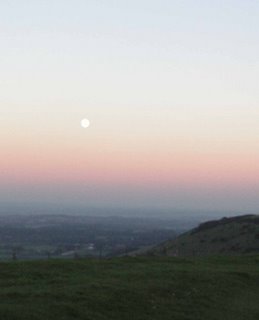England moves by train, they are cheap and efficient. In fact it is cheaper for me to take the train to the university every day than the bus: a roundtrip train fare is £2.50 or about $5.20. England was built on rails and they went to great lengths to ensure that they were not disruptive. This is a viaduct that traverses a part of downtown Brighton; it is over 100 years old and is quite a feat of engineering, especially when you consider it is made of bricks.

As I mentioned earlier there are now two of us in the MSc Plant Conservation course. Bakary Seenah joined me mid-October. He is from The Gambia where he is in charge of the seed collection unit for that country. It is quite interesting talking to him; we take so much for granted. There are five people in our lab, they are all coming over for dinner tonight so I hope to post a group shot, we have a Canadian (me) a Gambian, two Ghanese and a Indian.

The weather has been incredible of late and I spent Thursday afternoon on the beach, people were actually swimming. On Saturday I took off with Geoff, the musician who lives in the flat above me for Lewes for Guy Fawkes Night.

To get to Lewes, we biked up to Ditchling Beacon and across the ridge of the South Downs, this is the highest point of land around and in the distance you can see the North Downs which I am told are not as spectacular. The large complex is Plymton Agricultural College.





The town of Lewes has a 400 year tradition of bonfires and parades; the town of 12,000 people is inundated on November 5 by 50,000 visitors. We went by bike since it was an hour wait to get back out by train. The pictures do not do it justice; it was absolutely incredible with each of the societies trying to out do each other. Every November 5 people burn an effigy of Guy Fawkes who tried to blow up the houses of parliament. It is celebrated in Lewes since, on the edge of town a battle was fought that eventually lead to the formation of parliament.


Guy Fawkes , 1606, also known as Guido Fawkes, born in York, was an English Soldier and member of a group of Roman Catholics who attempted to carry out the Gunpowder Plot on 5 November 1605. The plot was an attempt to assinate the Protestant King James I (James VI of Scotland) and the members of both houses of the Parliment of England. He tried to achieve this by blowing up Westminster Palace during the formal opening session of the 1605 Parliament, in which the king would address a joint assembly of both the House of Lords and the House of Commons. Guy Fawkes was in large part responsible for the later stages of the plan's execution. His activities were detected, however, before the plan's completion. Following a severe interrogation involving the use of torture and a trial at Westminster Hall , Fawkes and his conspirators were executed for treason and attempted murder.


Of course all that cycling is thirsty work; we came back via the local pub in Falmer Village at the university. I am a local here now and know the owner and his wife quite well as we closed the pub on Saturday night. John, the landlord is an avid model train enthusiast and has one running around the top of the bar.
